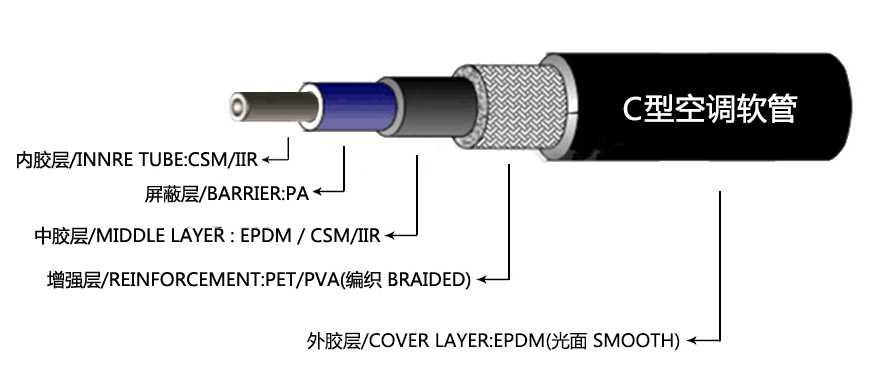replacing the power steering hose
Replacing the Power Steering Hose A Step-by-Step Guide
Power steering systems are essential in modern vehicles, providing ease of steering and control. Over time, components of this system, particularly the power steering hose, can wear out or become damaged. This can lead to leaks, poor steering response, and ultimately, costly repairs. Replacing the power steering hose is a maintenance task that, while challenging, can be accomplished by following some basic steps.
Understanding the Power Steering Hose
The power steering hose is a critical component that carries fluid from the power steering pump to the steering gear or rack. There are typically two hoses in most systems the high-pressure hose, which is under significant pressure, and the low-pressure return hose, which carries fluid back to the reservoir. Leaks can occur due to cracked rubber, age, or fraying, often indicated by fluid spots under the vehicle or difficulty steering.
Signs of a Failing Power Steering Hose
Before replacing the hose, it's essential to confirm its condition. Common signs of a failing power steering hose include
1. Leaking Fluid Look for puddles or spots of power steering fluid typically colored red or pink. 2. Whining Noise A whining sound when steering may indicate low fluid levels due to a leak. 3. Stiff Steering Difficulty in steering can signal insufficient fluid in the system, often linked to hose issues.
Tools and Materials Needed
To replace the power steering hose, gather the following tools and materials
- New power steering hose - Wrenches and socket set - Fluid catch basin - Power steering fluid - Rags for cleaning - Safety gloves and goggles
Step-By-Step Replacement Process
replacing the power steering hose

1. Prepare the Vehicle Park the vehicle on a level surface, set the parking brake, and turn off the engine. Allow it to cool completely.
2. Locate the Hose Open the hood and locate the power steering hose. Identify which hose needs replacement (high-pressure or low-pressure).
3. Drain the Fluid Place a catch basin under the hose to collect any fluid that may spill. Disconnect the hose from the pump and the steering rack using wrenches.
4. Remove the Old Hose Once disconnected, carefully remove the old hose from its fittings. Ensure all clamps and connectors are safely taken off.
5. Install the New Hose Attach the new power steering hose to the steering rack, and then to the pump. Ensure all connections are secure, and there are no leaks.
6. Refill the Power Steering Fluid Fill the reservoir with new power steering fluid according to the specifications in the owner's manual.
7. Check for Leaks Start the engine and turn the steering wheel to circulate the fluid. Check for any leaks around the new hose.
8. Test Drive Take the vehicle for a short drive to ensure the steering feels normal and no leaks are present.
Conclusion
Replacing the power steering hose is a straightforward yet essential maintenance task that can prolong the life of your vehicle’s steering system. By following these steps, you can ensure a safe and efficient driving experience. If at any point you feel uncertain, consulting a professional mechanic is always a wise choice.
-
Ultimate Spiral Protection for Hoses & CablesNewsJun.26,2025
-
The Ultimate Quick-Connect Solutions for Every NeedNewsJun.26,2025
-
SAE J1401 Brake Hose: Reliable Choice for Safe BrakingNewsJun.26,2025
-
Reliable J2064 A/C Hoses for Real-World Cooling NeedsNewsJun.26,2025
-
Heavy-Duty Sewer Jetting Hoses Built to LastNewsJun.26,2025
-
Fix Power Steering Tube Leaks Fast – Durable & Affordable SolutionNewsJun.26,2025

